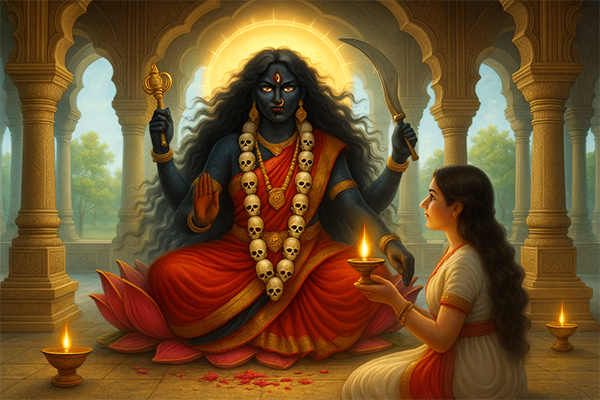
Kaalratri Devi, also known as Maa Kaalratri or Kalratri Mata, is the seventh form of the Navadurga, worshipped on the seventh day of Navratri, also called Saptami. She is revered as the fierce destroyer of darkness, fear, and ignorance. Her name combines “Kaal,” meaning time or death, and “Ratri,” meaning night, symbolizing her power over death, illusions, and evil.
Despite her fearsome appearance, Kalaratri Devi is worshipped as Shubhankari, the auspicious one, who protects her devotees and blesses them with fearlessness, courage, and liberation. She rides a donkey, holds a sword and iron hook, and radiates fire from her nostrils, signifying the destruction of negativity. Legends describe how Maa Kalratri defeated powerful demons like Shumbha, Nishumbha, and Raktabeeja, restoring dharma and cosmic balance.
Worship of Kalratri Mata during Navratri 2025 is believed to dispel negativity, remove obstacles, and empower devotees with unshakable confidence. Her story, symbolism, and puja vidhi guide seekers to embrace transformation and spiritual awakening under the protective grace of Goddess Kalratri.
Kaalratri Worship Date in Navratri 2025
The seventh day of Navratri, also called Saptami, is dedicated to the fierce and protective form of Goddess Durga known as Kaalratri Mata. She is worshipped as the Navratri 7th day goddess, and her puja is performed with great devotion to seek courage, protection, and spiritual strength.
In 2025, Kaalratri Puja in Navratri will be observed on Monday, 29 September 2025, during the Shukla Saptami Tithi of Sharad Navratri.
Shukla Saptami Tithi begins: 28 September 2025 at 6:52 AM
Shukla Saptami Tithi ends: 29 September 2025 at 7:44 AM
This day holds special importance for Maa Kalratri worshippers, as her puja is believed to dispel negative energies, remove obstacles, and grant fearlessness. Performing Kalratri Mata Puja Vidhi on this day, with chanting of Kalratri mantra and offering her bhog, brings divine blessings.
The Navratri 7th day puja vidhi includes lighting a lamp with mustard oil, offering red flowers, jaggery, and sesame, and reciting the Kalratri Mata mantra with devotion. Observing her worship on this day is considered highly auspicious for protection and liberation.
Who is Kaalratri Devi
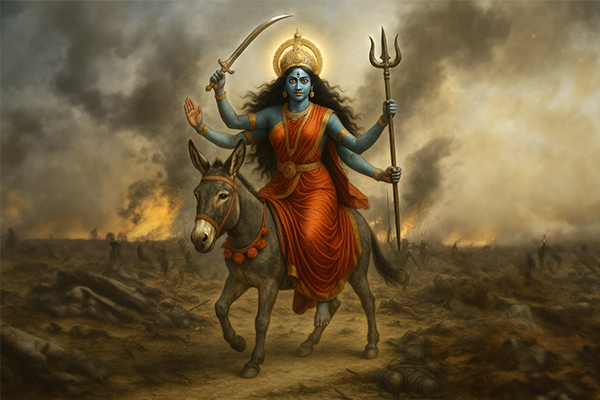
Kaalratri Devi, also known as Maa Kalratri or Kalaratri Mata, is the seventh form of Navadurga worshipped on the seventh day of Navratri. She is revered as the fierce aspect of Goddess Durga who destroys ignorance, fear, and darkness while blessing her devotees with fearlessness and protection. Many devotees search for who is Kaalratri, and scriptures describe her as the most terrifying yet the most compassionate form of the goddess, also known as Shubhankari, the auspicious one.
The Kalratri story tells us that she is a form of Parvati, the consort of Lord Shiva, who took on a dark, fearsome appearance to destroy powerful demons. The Markandeya Purana refers to her as the “dark night of dissolution,” while the Mahabharata depicts her with a black body, bloody mouth, and blazing eyes, symbolizing the destruction of evil. Legends of Maa Kalratri include her role in defeating demons such as Shumbha, Nishumbha, and Raktabeeja when no other force could stop them.
In iconography, Kalratri Mata is portrayed with disheveled hair, three eyes shining like lightning, and flames emerging from her nostrils. She rides a donkey, carries a sword and iron hook in her left hands, while her right hands are raised in Abhaya and Varada mudras to grant protection and boons. Despite her terrifying form, she is worshipped as Devi Kalratri, the protector of the righteous and remover of fear.
Thus, the story of Maa Kalratri shows her as both fierce and benevolent. While her form represents destruction and time, her blessings assure courage, strength, and liberation, making her one of the most important deities to worship during Navratri.
Significance of Kaalratri Devi
Kaalratri Devi holds immense significance in the Navadurga tradition and is worshipped as the Navratri 7th day goddess. Her name combines “Kaal,” meaning time or death, and “Ratri,” meaning night, symbolizing her power to dissolve fear, ego, ignorance, and negativity. She represents the cosmic force of time that destroys illusion and prepares the path for truth and liberation.
The significance of Maa Kalratri is that she is both fierce and compassionate. While her terrifying form destroys demons and dark energies, she is also known as Shubhankari, the auspicious one who blesses devotees with peace, fearlessness, and protection. The story of Maa Kalratri emphasizes that true wisdom is attained only after overcoming fear and ignorance.
In Tantric traditions, Kalratri Mata is worshipped as the goddess of transformation who grants spiritual insight and prepares seekers for higher consciousness. Chanting the Kalratri mantra and performing Kalratri puja in Navratri removes obstacles, clears negativity, and brings inner strength. Devotees believe that worshipping Kalratri Mata on the seventh day of Navratri 2025 protects them from accidents, misfortune, and evil influences.
Kalratri Mata is especially revered in West Bengal, Himachal Pradesh, Odisha, Maharashtra, and Uttar Pradesh. Her worship highlights the balance of destruction and renewal, showing that only by dissolving darkness can light emerge. The Navratri 7th day color associated with Kalaratri Devi is black, symbolizing power, mystery, and the absorption of negativity. Devotees wear this color on her day to align with her transformative energy.
Thus, the significance of Kalratri Devi is not limited to her fierce form but lies in her role as a purifier, protector, and liberator. She teaches that courage and surrender to divine will are essential for spiritual awakening.
Origin of Goddess Kaalratri
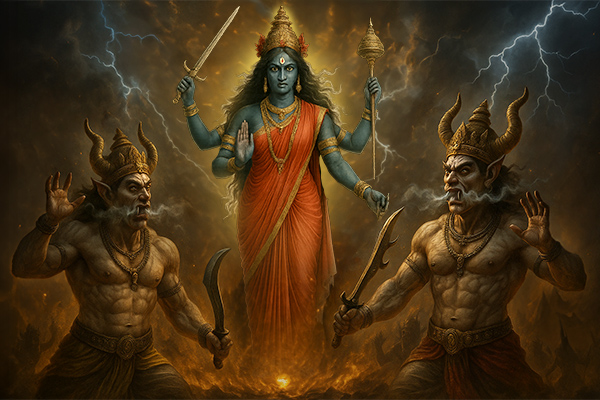
The origin of Kaalratri Mata is described in various Hindu scriptures, including the Devi Mahatmya of the Markandeya Purana. When demons like Shumbha, Nishumbha, and Raktabeeja threatened the balance of the cosmos, the goddess manifested in her terrifying form as Kaalratri Devi. She emerged as the embodiment of time (Kaal) and night (Ratri), fierce enough to annihilate evil and restore dharma.
According to one version of the Kalratri ki katha, Goddess Parvati shed her golden skin to take on a darker, wrathful form. From her emerged Mahagauri, fair and radiant, while her fierce aspect appeared as Maa Kalratri, the destroyer of negativity. This dual manifestation showed that the goddess can be both gentle and terrifying, nurturing and protective, depending on the need of the universe.
The story of Maa Kalratri in the Skanda Purana describes how she reduced demons to ashes with just the power of her breath during the battle with Durgamasur. In the Mahabharata, she is mentioned as the terrifying night of dissolution, called upon to ensure the destruction of adharma.
Kalratri Mata ki katha emphasizes that her dark form symbolizes dissolution and destruction, but also renewal and transformation. She prepares the universe for regeneration, embodying the eternal cycle of creation, preservation, and dissolution. Her connection to Lord Shiva further reinforces this symbolism, as together they represent time, transformation, and the balance of cosmic energies.
Thus, the origin of Devi Kalratri highlights her role as the purifier who destroys darkness and prepares the soul for light, guiding devotees on the path of liberation.
Legends and Stories of Kaalratri Devi
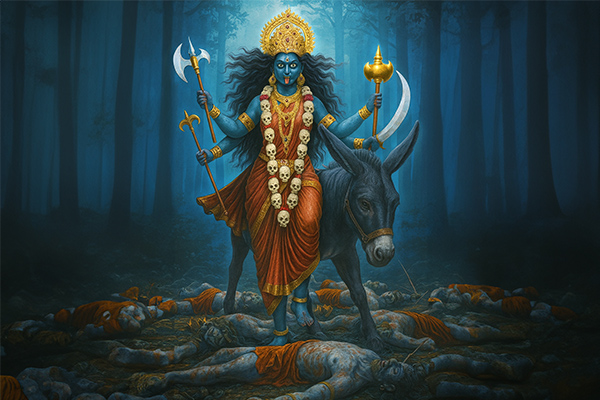
The Kalratri story highlights her as one of the fiercest forms of Maa Durga, yet one who blesses her devotees with courage and protection. She is most famous for slaying the demon Raktabeej, whose blood produced countless duplicates of himself every time it touched the ground. Maa Kalratri appeared riding a donkey, with flames from her nostrils, and struck Raktabeej down. With her extended tongue, she drank every drop of his blood before it fell, ending his power of rebirth and freeing the gods from his terror. This story of Maa Kalratri shows her as the ultimate destroyer of negativity and evil.
Another well-known tale is about Parvati’s transformation into Kaalratri. To restore cosmic balance, Goddess Parvati shed her golden skin, which became Mahagauri, while her darker form emerged as Kalratri Mata. This form embodied destruction and time itself, terrifying demons and clearing illusions. Even though her appearance was fearsome, devotees saw her as Devi Kalratri, who granted wisdom, fearlessness, and blessings.
Other versions of Kalratri mata ki kahani describe her as appearing whenever dharma was threatened. In the Skanda Purana, her breath alone reduced demons to ashes, while in the Mahabharata she is mentioned as the fierce night of dissolution who helps destroy adharma. These stories emphasize that though she appears as darkness, her purpose is to clear the way for truth, justice, and light.
The story of Maa Kalratri teaches that destruction is not merely an end but also a transformation. By drinking the blood of Raktabeej, or by emerging from Parvati as a fierce form, Kalratri Maa symbolizes the cleansing of fear, illusion, and ego. Devotees worship her not out of fear but for her protective energy, which clears obstacles and grants liberation.
Spiritual Lessons of Kaalratri Devi
The significance of Kalratri Mata lies not only in her terrifying form but also in the deep spiritual lessons she imparts to her devotees. Known as the Navratri 7th day goddess, she represents courage, resilience, and the destruction of ignorance. Her fierce appearance teaches that darkness and fear must be confronted directly, as avoiding them only delays transformation.
The story of Maa Kalratri shows that destruction is part of growth. By slaying Raktabeej and drinking his blood, she symbolizes the need to eliminate repetitive patterns of negativity and illusion. Devotees learn that true progress comes from facing inner fears and weaknesses rather than running from them.
Kalratri Devi also embodies the balance of light and dark within the human soul. She reminds seekers that both aspects are necessary for evolution. Her blessings inspire self-reflection and the integration of shadow aspects into a higher consciousness. Chanting Kalratri mantras during her worship helps remove fear, instills confidence, and awakens inner strength.
Her protective energy reassures devotees that divine support is always present when one is sincere in faith. The significance of Maa Kalratri also lies in her compassion: even while destroying demons, she is Shubhankari, the auspicious one, who guides seekers toward liberation.
Thus, the spiritual meaning of Kalratri Devi is that transformation comes through courage, discipline, and surrender. She urges her devotees to embrace change, conquer fear, and walk steadily on the path of truth and self-realization.
Puja Vidhi at Home for Kaalratri Devi
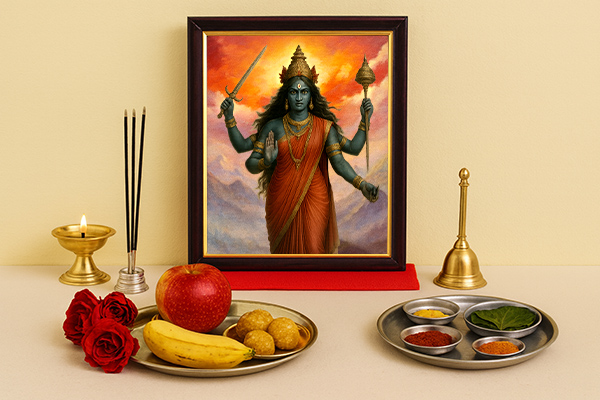
Performing Maa Kalratri Puja Vidhi during Navratri is considered extremely powerful for removing negativity and seeking divine protection. On the 7th day of Navratri, devotees perform Kalratri Mata Puja Vidhi with devotion, following rituals that honor her fierce yet protective form.
Required Materials
- Idol or picture of Maa Kalratri
- Clean altar with red or black cloth
- Diya (lamp) filled with mustard oil or ghee
- Incense sticks and dhoop
- Red or dark-colored flowers
- Fruits, sweets, and jaggery for Kalratri ka bhog
- Kumkum, turmeric, and sandalwood paste
- Betel leaves, betel nuts, and coins
- Camphor for aarti
- Water vessel (Kalash) with mango leaves and coconut
Step-by-Step Puja Guide
- Begin the puja after bathing and wear clean clothes, preferably in dark or red shades, which are Kalratri Mata’s favourite colours.
- Clean the puja area and set up the altar with an image or idol of Maa Kalratri Mata.
- Light the diya and incense sticks to purify the space.
- Perform Kalash Sthapana and sprinkle holy water around the altar.
- Apply kumkum and sandalwood paste to the idol, then offer red flowers, fruits, and sweets.
- Prepare Kalratri bhog like jaggery, sesame, and coconut, and place it before the goddess.
-
Chant the Kalratri Mata mantra such as:
Om Kaalratryai Namah
or the beej mantra for Maa Kalratri. - Perform aarti with camphor, ringing bells, and reciting Kalratri stotra or stuti.
- Conclude by offering prayers for protection, courage, and spiritual growth, then distribute prasad among family members.
This Navratri 7th day puja vidhi not only pleases Devi Kalratri but also helps devotees overcome fear, obstacles, and harmful influences. Performing Maa Kalratri Puja with devotion ensures blessings of strength, fearlessness, and peace.
Mantras Dedicated to Kaalratri Devi
Chanting Kalratri mantras during Navratri is believed to remove fear, dissolve negativity, and grant spiritual power. Devotees recite different mantras such as the Maa Kalratri mantra, Kalratri beej mantra, and Kalratri Gayatri mantra to seek her blessings on the 7th day of Navratri. These mantras help devotees align with her fierce energy while receiving protection and courage.
Main Kalratri Mantra
Om Kaalratryai Namah
Meaning: Salutations to Goddess Kaalratri.
Benefits: Removes fear, protects from evil, and bestows peace and strength.
Beej Mantra of Maa Kalratri
Om Aim Hreem Kleem Chamundayai Vichche Om Kaalratryai Namah
Meaning: A powerful mantra combining the bija syllables of the goddess.
Benefits: Known as the Maa Kalratri beej mantra, it destroys obstacles, removes harmful influences, and strengthens inner willpower.
Kalratri Gayatri Mantra
Om Mahadevya Cha Vidmahe Kaalratryai Cha Dheemahi Tanno Devi Prachodayat
Meaning: O divine mother Kaalratri, inspire us with wisdom and courage.
Benefits: This Kalratri Gayatri mantra grants spiritual clarity, resilience, and divine protection.
Navratri Day 7 Mantra / 7th Day of Navratri Mantra
Ya Devi Sarva Bhuteshu Kaalratri Roopena Samsthita Namastasyai Namastasyai Namastasyai Namo Namah
Meaning: Salutations again and again to the goddess who dwells in all beings as Kaalratri.
Benefits: Chanting this Navratri 7th day mantra removes fear, strengthens faith, and brings blessings of Maa Kalratri.
Chanting these mantras 108 times with devotion, especially during Kalratri puja in Navratri, invokes the goddess’s blessings. Devotees often combine them with Kalratri stotra or Kalratri stuti to deepen their prayers.
Benefits of Worshipping Kaalratri Devi
Worshipping Maa Kalratri on the 7th day of Navratri brings immense spiritual, mental, and material blessings. Though her form is fierce, the benefits of Kaalratri puja are protective, auspicious, and transformative. She is revered as the remover of fear and negativity, the goddess who grants courage and success in all areas of life.
Spiritual Benefits
- Removes ignorance, darkness, and inner fears
- Bestows wisdom, clarity, and spiritual strength
- Supports seekers in achieving self-realization and liberation
- Helps in advanced practices like Kalratri sadhana and mantra chanting
Mental & Emotional Benefits
- Reduces stress, fear, and anxiety
- Increases resilience, confidence, and determination
- Inspires courage to face life’s challenges with strength
- Helps devotees embrace transformation and overcome obstacles
Material & Protective Benefits
- Protects from evil influences, accidents, and misfortune
- Ensures success in ventures and stability in finances
- Clears obstacles in personal and professional life
- Attracts prosperity, positivity, and divine support
Most Important Benefits of Maa Kalratri Puja
- Removes deep-rooted fears and negative energies
- Dispels ignorance and restores dharma
- Enhances courage and fearlessness
- Grants blessings of health, wealth, and success
- Protects devotees from harmful forces and dangers
- Helps overcome karmic burdens and progress on the spiritual path
The Kalratri Mata ki katha teaches that her fierce destruction of demons symbolizes the removal of internal demons like ego, greed, and fear. Worshippers of Kalratri Mata Puja Vidhi experience protection, progress, and liberation.
Regular chanting of Kalratri mantra, reciting the Kalratri stotra, and offering Kalratri bhog such as jaggery and sesame strengthen her blessings, ensuring a life filled with positivity and spiritual growth.
Kaalratri Worship Do’s and Don’ts
Performing Maa Kalratri Puja on the 7th day of Navratri requires devotion, sincerity, and discipline. The Kalratri puja vidhi helps devotees connect with the fierce yet protective energy of the goddess, while following proper do’s and don’ts ensures that her blessings are received fully.
Do’s of Kalratri Puja
- Begin Kalratri Mata Puja Vidhi after bathing and wear clean red, black, or dark-colored clothes, which are considered Kalratri Mata’s favourite colours.
- Offer red or dark flowers, jaggery, sesame seeds, and coconut as Kalratri bhog, as these please the goddess.
- Light a mustard oil diya during the puja, which is highly auspicious for Maa Kalratri.
- Chant the Kalratri mantra, Kalratri stotra, or Navratri Day 7 mantra at least 108 times with devotion.
- Observe fasting with satvik food like fruits, milk, or light meals to purify the body and mind.
- Perform Navratri 7th day puja vidhi at night, as Kalratri is especially worshipped during the dark hours.
- Meditate on her form, invoking her protection and inner strength.
Don’ts of Kalratri Puja
- Avoid consuming meat, alcohol, onion, or garlic during Navratri and especially on the 7th day.
- Do not offer stale flowers, spoiled food, or unclean items to the goddess.
- Never place the idol or image of Maa Kalratri directly on the floor; always keep it on a clean altar or cloth.
- Do not rush through the rituals; each step of the Kalratri Mata puja vidhi must be performed with respect and sincerity.
- Avoid negative thoughts, fear, or anger while worshipping, as Maa Kalratri blesses devotees who worship with a pure heart.
Following these do’s and don’ts ensures that Maa Kalratri Puja is performed correctly, bringing blessings of protection, courage, and liberation.
Remedies and Blessings of Worshipping Kaalratri Devi
The worship of Maa Kalratri during Navratri 7th day puja vidhi is not just about devotion but also about seeking remedies for problems in life. By offering proper Kalratri bhog, chanting her mantras, and performing Maa Kalratri puja, devotees can overcome fear, obstacles, and negative energies.
Remedies
- Worship Kaalratri Mata on Saptami of Sharad Navratri with red flowers, jaggery, and sesame to dissolve negativity.
- Chant Om Kaalratryai Namah or the Kalratri Mata mantra daily to remove fear, harmful influences, and inner weakness.
- Light a mustard oil diya at night to ward off evil energies and invite divine protection.
- Recite the seventh chapter of Durga Saptashati as part of Kalratri puja in Navratri, as it is highly meritorious on her day.
- Offer food, clothes, or donations in her name, as charity reduces karmic burdens and brings divine grace.
Blessings & Results
- Removal of deep-rooted fears and negative forces from life
- Protection from misfortune, evil influences, and accidents
- Strength, resilience, and courage to face life’s challenges
- Smooth progress in personal and professional life
- Spiritual clarity and acceleration on the path to self-realization
- Success in ventures and financial stability
- Balance of inner peace, confidence, and positivity
The Kalratri Mata ki katha teaches that her fierce destruction of demons represents the cleansing of inner impurities like ego, greed, and fear. Through Kalratri sadhana, devotees not only receive protection but also achieve transformation and fearlessness.
Worshipping Kalratri Devi with devotion during Navratri ensures overall balance- removing darkness while bestowing prosperity, courage, and liberation.
Rudra Centre’s Kaalratri Products & Puja Services
Devotees who wish to honour Maa Kalratri more deeply during the 7th day of Navratri can participate in specialized pujas and bring home sacred items that carry her divine energy. These services and products are designed to support Kalratri Mata puja vidhi, enhance Kalratri sadhana, and amplify the benefits of Kalratri mantra chanting.
Maa Kali Brass Idol
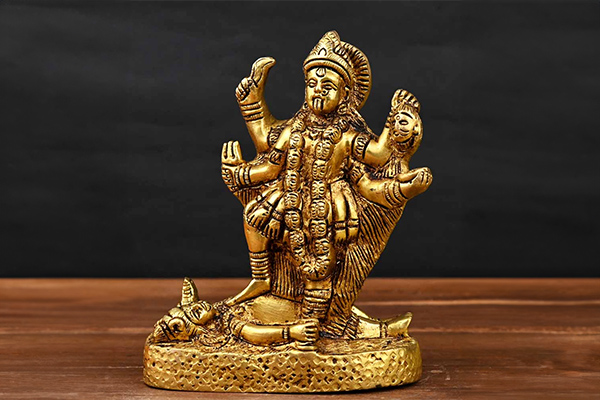
A finely crafted brass idol of Goddess Kali, symbolizing strength and fearlessness. Ideal for home altars to support daily Maa Kalratri puja. Click on the link to buy Maa Kali Brass Idol from Rudra Centre.
Goddess Kaali Standing Over Shiva Bronze Idol
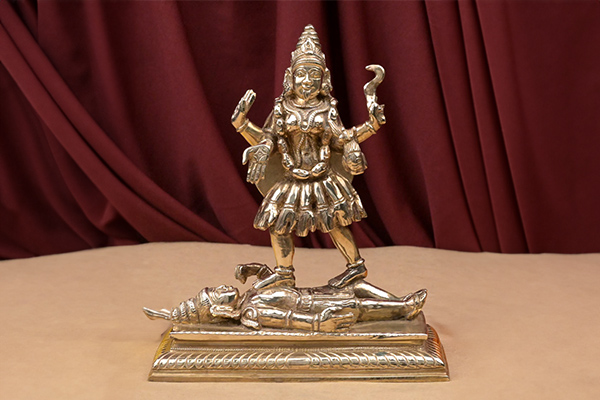
Depicts Kali standing over Shiva, signifying the destruction of ego. A sacred piece for those practicing Kalratri sadhana. Click on the link to buy Goddess Kaali Standing Over Shiva Bronze Idol from Rudra Centre.
Goddess Maha Kaali Brass Idol
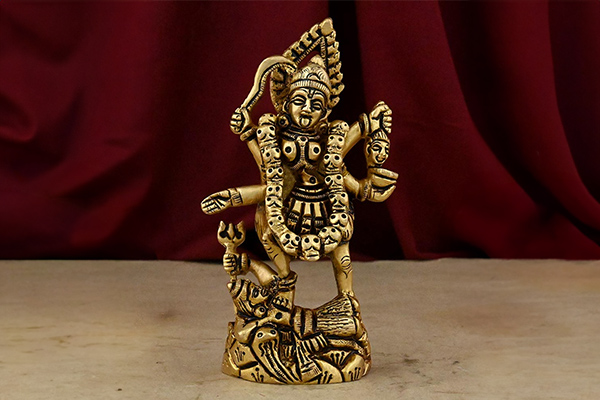
A beautiful brass idol of Maa Kali in her four-armed form, holding weapons of power and protection. Perfect for Navratri 7th day puja vidhi. Click on the link to buy Goddess Maha Kaali Brass Idol from Rudra Centre.
Maha Kali in Gomed – 135.95 Carats
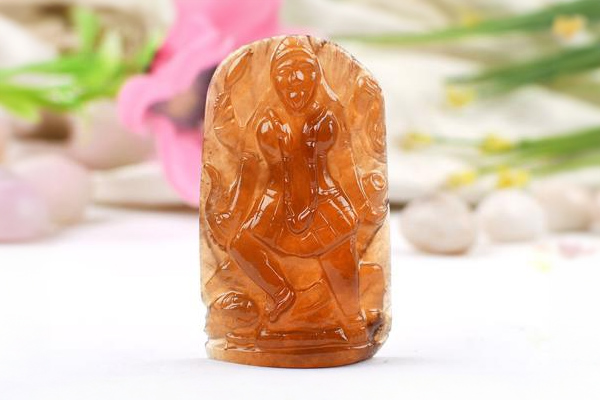
A rare statue of Kali carved from natural Gomed gemstone, believed to enhance confidence and remove obstacles. Supports Kalratri mantra benefits. Click on the link to buy Maha Kali in Gomed from Rudra Centre.
Shree Kali Desktop Yantra
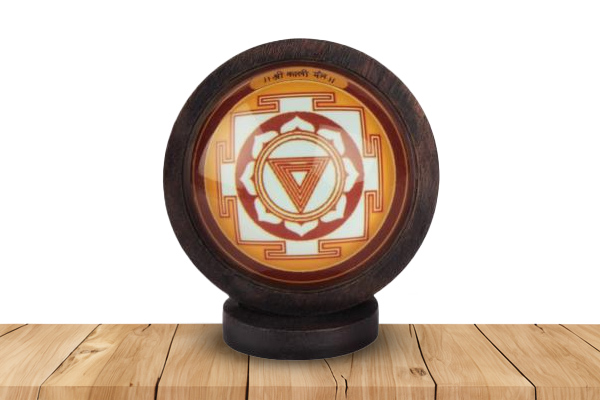
A powerful yantra featuring Maa Kali, used for protection from negativity and spiritual empowerment during Kalratri Mata puja vidhi. Click on the link to buy Shree Kali Desktop Yantra from Rudra Centre.
Kali Puja (Puja for Warding off Evil Spirits)
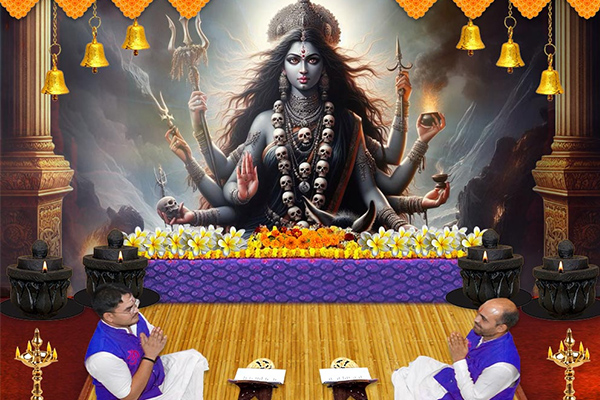
A Vedic ritual invoking Maa Kali’s blessings for protection and the removal of dark energies. Includes Kalratri jaap mantra recitation, homa, and aarti. Click on the link to book Kali Puja from Rudra Centre.
Kaali Puja and Yagna – 11000 Chants
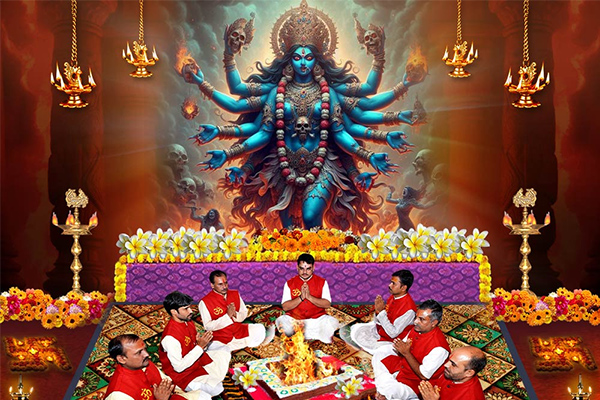
A comprehensive Maa Kalratri puja with 11000 chants, homa, and offerings to eliminate malefic influences and ensure prosperity. Click on the link to book Kaali Puja and Yagna from Rudra Centre.
Puja at the Kalighat Kali Temple – Kolkata
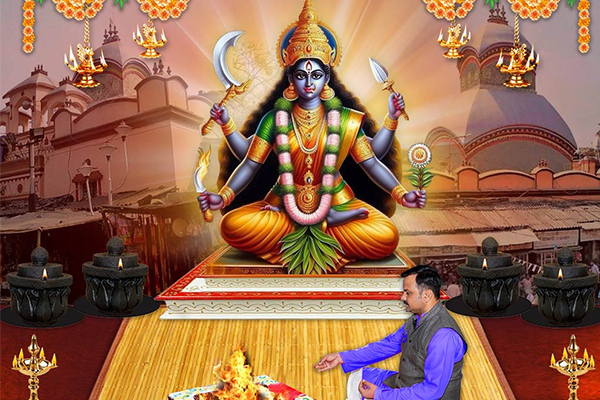
A sacred puja performed at the famous Kalighat Temple with mantra japa, prasad, and yantra offerings. Especially powerful during Navratri 7th day. Click on the link to book Puja at Kalighat Kali Temple from Rudra Centre.
Tridevi Saraswati, Lakshmi, Kali Puja & Homam
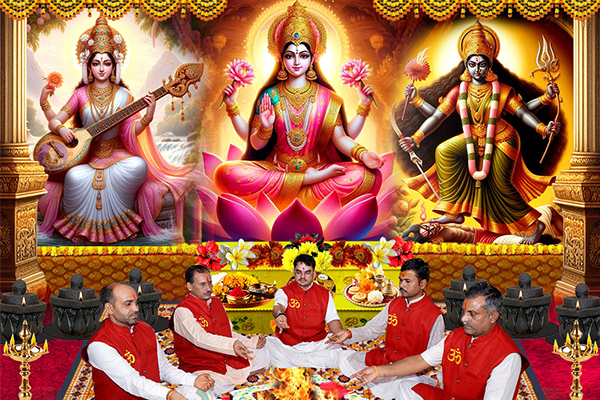
A combined puja invoking three goddesses for wisdom, prosperity, and protection, including Kalratri Mata puja vidhi and stotra recitations. Click on the link to book Tridevi Puja from Rudra Centre.
Daily Kali Puja Services
Regular puja performed by experienced priests to maintain positivity, strength, and harmony in daily life. Strengthens Kalratri sadhana for devotees. Click on the link to book Daily Kali Puja Service from Rudra Centre.
Temples Dedicated to Kaalratri Devi
Temples of Maa Kalratri hold immense importance for devotees, especially during the 7th day of Navratri when she is worshipped as the fierce yet protective goddess. These shrines preserve age-old traditions of Kalratri Mata puja vidhi, including chanting of Kalratri mantra, offering of Kalratri bhog, and performing night-long rituals.
Famous Temples of Goddess Kaalratri
Kaalratri Temple, Varanasi (Kalika Galli) One of the most sacred temples dedicated to Goddess Kalratri, it attracts thousands of devotees during Shardiya Navratri. Pilgrims perform Maa Kalratri puja here to seek protection and liberation.
Kalratri Temple, Dumri Buzurg, Bihar Known for its local traditions, this temple is especially visited during the Navratri 7th day puja vidhi. Devotees recite the Kalratri Mata mantra and seek blessings for courage and fearlessness.
Kalratri Vindhyachal Temple, Mirzapur, Uttar Pradesh A major center of Kalratri Devi worship, where rituals include Kalratri stotra recitation and offerings of jaggery and sesame as Kalratri bhog.
Kalratri Devi Temple, Almora, Uttarakhand Situated in a serene Himalayan setting, this temple is known for its peaceful atmosphere, where devotees meditate on Kalratri Mata ki katha and chant mantras.
Chamunda Devi Temple, Kangra, Himachal Pradesh While dedicated to Chamunda, this temple also honors Devi Kalratri as a fierce form of the goddess. It is a place where devotees perform Kalratri sadhana during Navratri.
Worship Beyond India
In Shakti temples abroad, especially among the Indian diaspora, Kalratri Mata is worshipped during Durga Puja and Navratri. These temples conduct Kalratri jaap mantra recitations, devotional songs, and cultural gatherings, spreading her worship worldwide.
These temples not only serve as centres of devotion but also as places of cultural and spiritual learning, where the fierce compassion of Kalratri Maa inspires devotees to overcome fear, ignorance, and negativity.
Presence in Other Traditions
The worship of Kaalratri Devi extends beyond Hindu traditions, as her qualities of fearlessness, destruction of evil, and protection resonate with goddess archetypes in other faiths and cultures. While she is distinctly revered as the Navratri 7th day goddess, her attributes find echoes in Buddhism, Jainism, and global mythologies.
In Buddhism
Though Maa Kalratri is not directly present in Buddhist scriptures, Tibetan traditions venerate fierce deities like Palden Lhamo, who resemble Kalaratri Devi in their role as protectors who destroy negativity and guide devotees toward higher wisdom. The image of fiery-eyed, wrathful female figures in Vajrayana Buddhism reflects the essence of Goddess Kalratri as a force of transformation and fearlessness.
In Jainism
Jainism, with its emphasis on non-violence, does not include fierce deities like Kalratri Mata in active worship. However, protective mother goddesses such as Sacciya Mata are venerated in Jain temples, sharing iconographic similarities with Devi Kalratri, such as the lion mount and her role as a guardian deity.
In Southeast Asia
Forms of Maa Durga and her fierce aspects, including Kalratri Mata, have influenced temple art in Indonesia, Cambodia, and Vietnam. Local depictions often show Durga in battle with demons, with attributes such as weapons and a lion or donkey mount, directly connecting with Kalratri ki katha.
In Comparative Mythology
Globally, Kalratri Devi mirrors archetypes like Mesopotamian goddess Ereshkigal, Greek goddess Hecate, and Cybele, who embody destruction, protection, and transformation. Just as Maa Kalratri stuti emphasizes her role as the remover of fear, these goddesses also symbolize the balance of life, death, and rebirth.
Through these connections, Kalaratri Devi emerges as a universal force of divine feminine energy- fierce yet compassionate, destructive yet protective, guiding humanity toward transformation and liberation.

-in-Astrology.jpg)
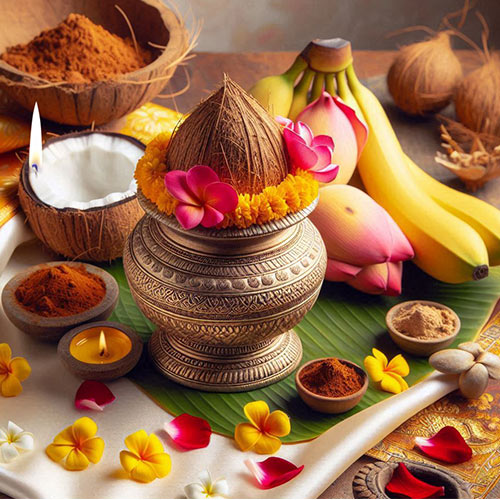
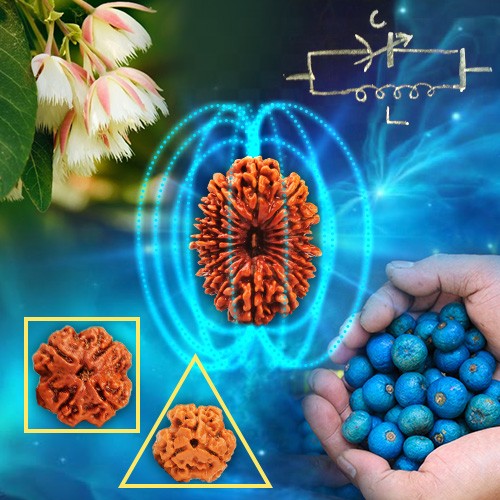
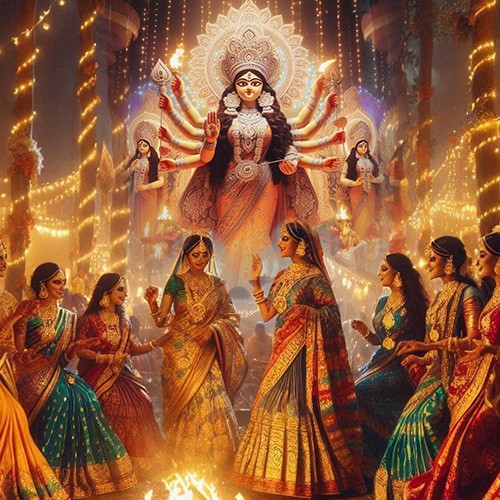

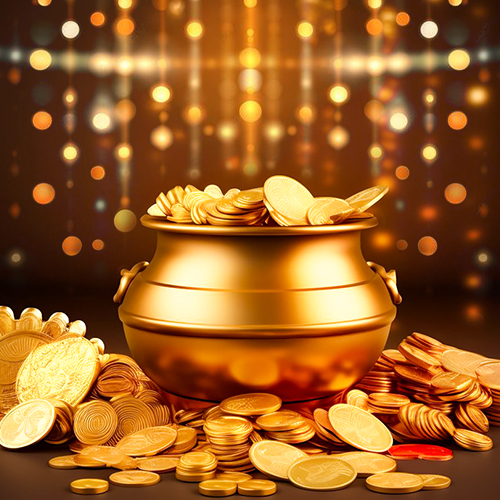
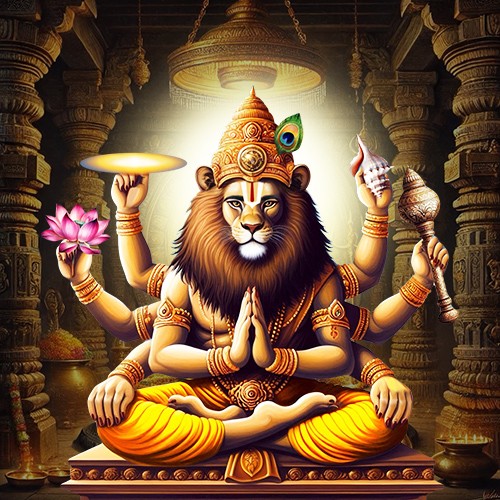
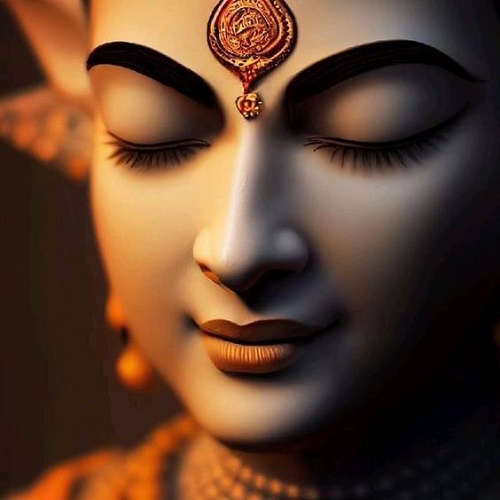
.jpg)
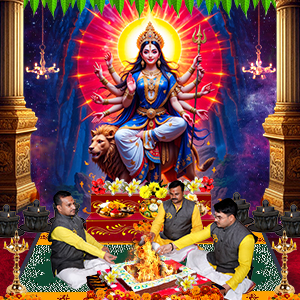
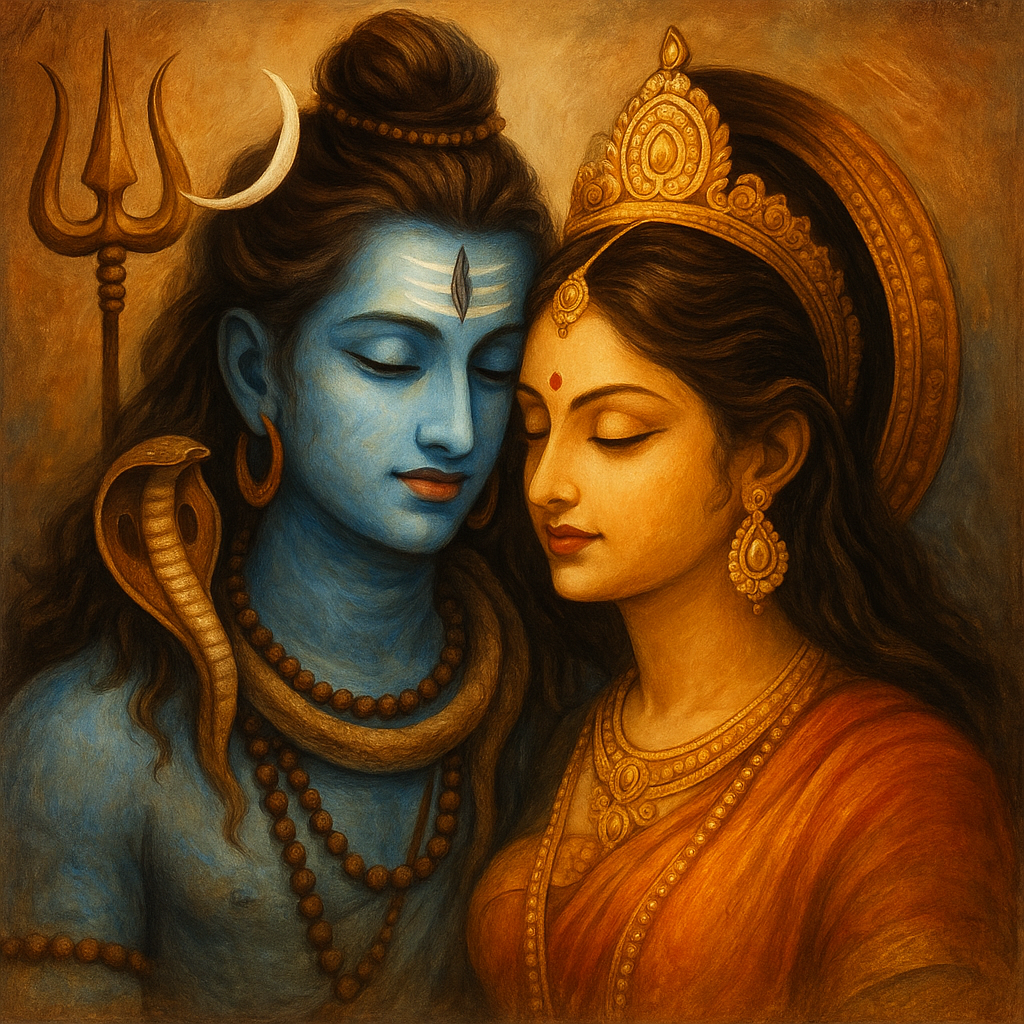
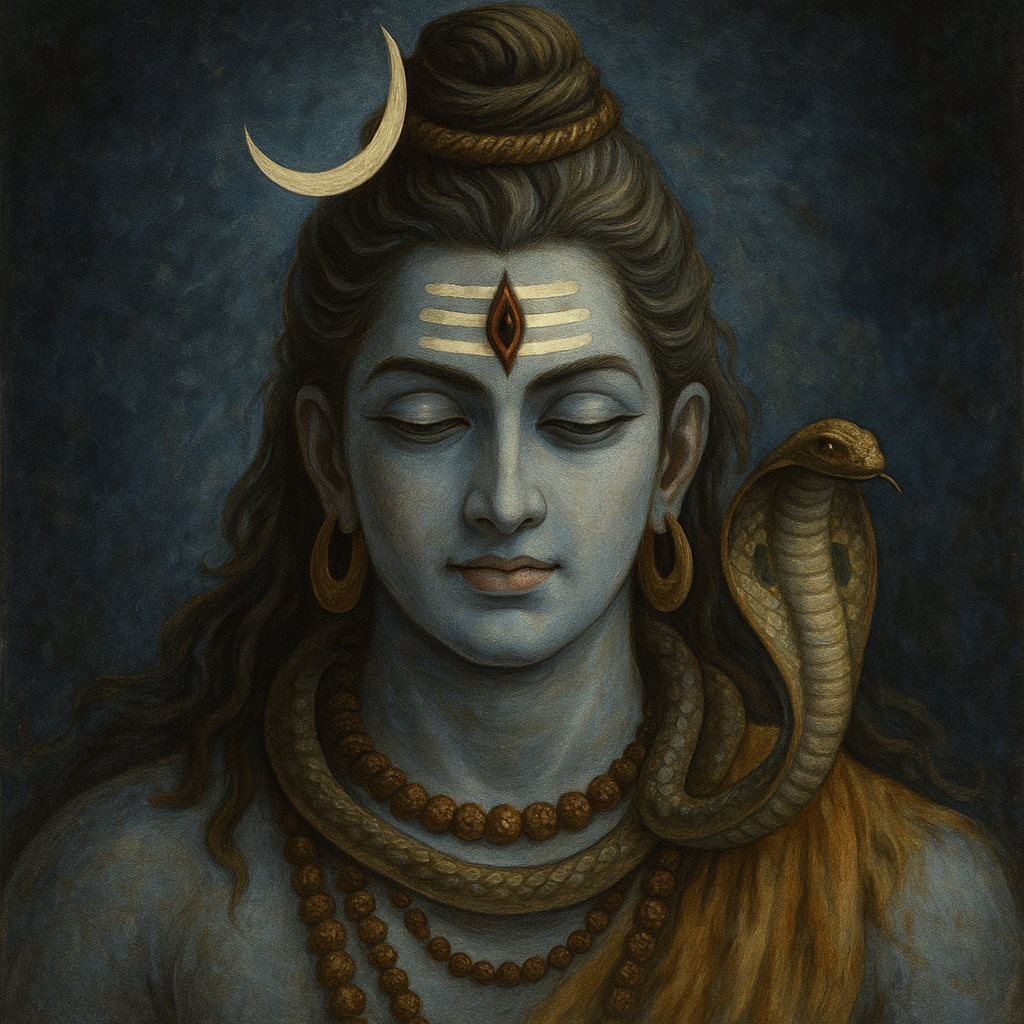
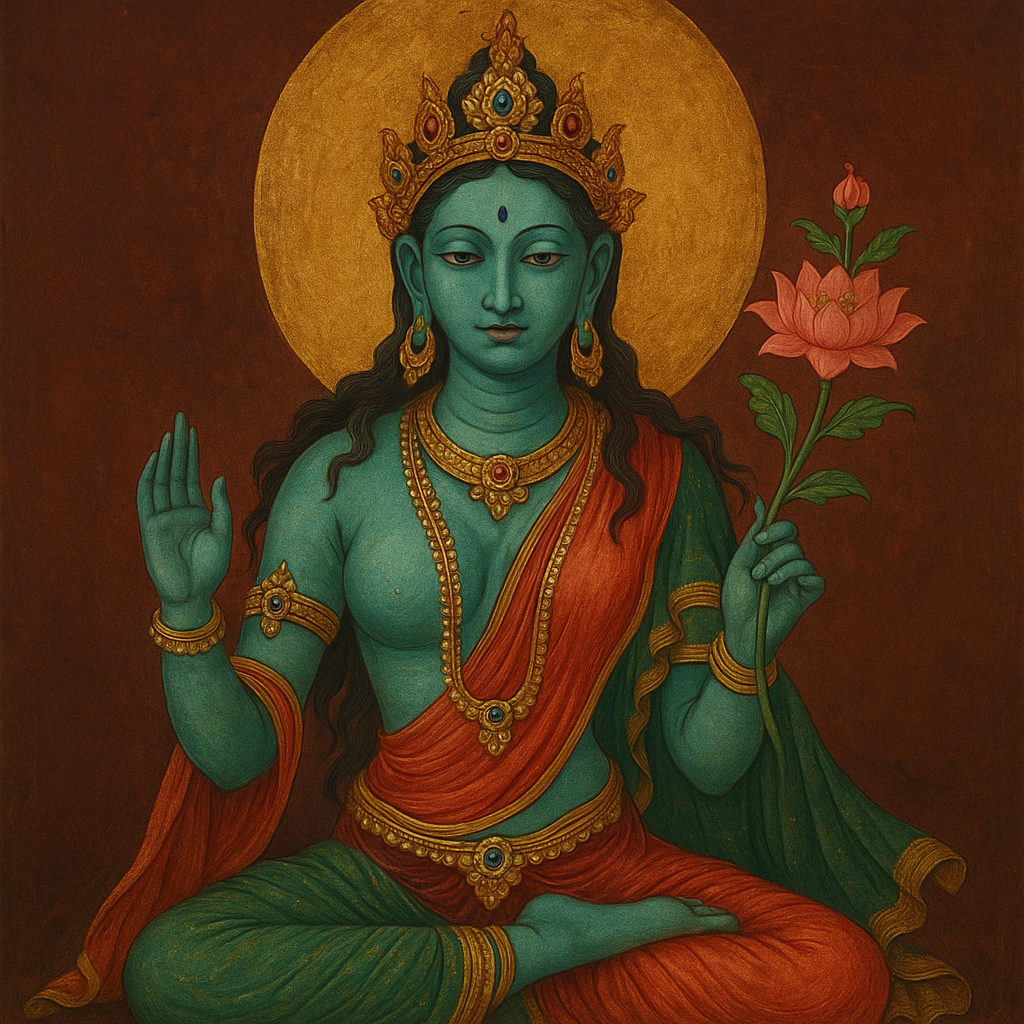
Comments 0
Leave your thought here